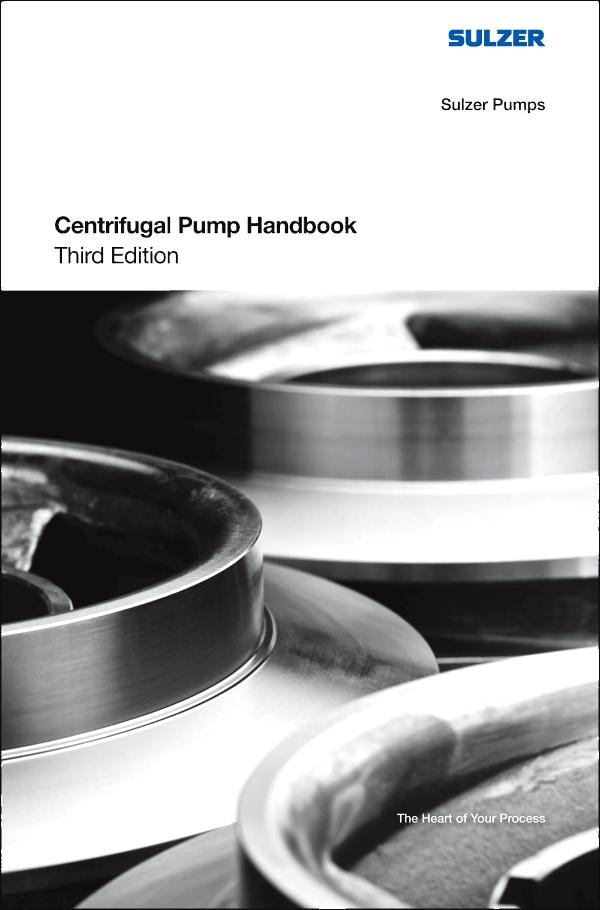
Sofort lieferbar (Download)
This long-awaited new edition is the complete reference for engineers and designers working on pump design and development or using centrifugal pumps in the field. This authoritative guide has been developed with access to the technical expertise of the leading centrifugal pump developer, Sulzer Pumps. In addition to providing the most comprehensive centrifugal pump theory and design reference with detailed material on cavitation, erosion, selection of materials, rotor vibration behavior and forces acting on pumps, the handbook also covers key pumping applications topics and operational issues, including operating performance in various types of circuitry, drives and acceptance testing.
- Enables readers to understand, specify and utilise centrifugal pumps more effectively, drawing on the industry-leading experience of Sulzer Pumps, one of the world's major centrifugal pump developers
- Covers theory, design and operation, with an emphasis on providing first class quality and efficiency solutions for high capital outlay pump plant users
- Updated to cover the latest design and technology developments, including applications, test and reliability procedures, cavitation, erosion, selection of materials, rotor vibration behaviour and operating performance in various types of circuitry
Inhaltsverzeichnis
1;Front Cover;1 2;Centrifugal Pump Handbook;4 3;Copyright;5 4;Contents;6 5;Preface;14 6;Chapter one - Physical Principles;16 6.1;Energy Conversion In Centrifugal Pumps;16 6.2;Power, Losses and Efficiency;18 6.3;Total Head of the Pump;20 6.4;The Total Head Required By.A.Pumping.Plant;21 6.5;Cavitation and Suction Behavior;22 6.6;Model Laws and Similarity Coefficients;30 6.7;Axial Thrust;31 6.8;Radial Thrust;37 6.9;Rotor Dynamics;38 7;Chapter two - Behavior of Centrifugal Pumps in Operation;42 7.1;Characteristics Of Centrifugal Pumps;42 7.2;Control Of Centrifugal Pumps;43 7.3;Matching Characteristics To.Service Data;56 7.4;Torque/Speed Curves;59 7.5;Startup Time For A Centrifugal Pump;63 7.6;Rundown Time For A Centrifugal Pump.(Disregarding The Pressure.Surge);64 7.7;Pumping Special Liquids;65 7.8;Minimum Flow Rate;79 8;Chapter three - Acceptance Tests with Centrifugal Pumps;84 8.1;Preliminary Remarks;84 8.2;Pump Tests;84 8.3;Axial Thrust Measurements;95 8.4;Radial Thrust Measurements;99 8.5;Efficiency Determination by the Thermometric Measurements;99 9;Chapter four - Special Data for Planning Centrifugal Pump Installations;104 9.1;Intake Design for Vertical Pumps;104 9.2;Guidelines for Inlet Pipelines;113 9.3;Pressure Surges in Pipeline Systems;125 9.4;Monitoring And Instrumentation For Centrifugal Pumps;139 9.5;Noise Emission from Centrifugal Pumps;140 9.6;Vibration on Centrifugal Pumps;151 10;Chapter five - Mechanical Components;160 10.1;Shaft Couplings;160 10.2;Bearings;164 10.3;Seals;168 10.4;Pipe Forces;170 11;Chapter six - Pipelines, Valves and Flanges;174 11.1;Pressure Losses;174 11.2;Pipe Dimensions;197 11.3;Bibliography;198 12;Chapter seven - Centrifugal Pump Drives;200 12.1;Electric Motors;200 12.2;Diesel Engines;221 12.3;Gas Turbines;224 12.4;Speed Converters;233 13;Chapter eight - Materials and Corrosion;242 13.1;INTRODUCTION;242 13.2;Factors Affecting Corrosion;242 13.3;GENERAL CONSIDERATIONS AFFECTING THE CHOICE OF MATERIAL;247 13.4;Forms of Corrosion;2
48 13.5;Corrosive Properties of Liquids Being Pumped;258 13.6;Corrosion Problems in Hydraulic Machines;261 13.7;CONCLUSIONS;265 14;Chapter nine - Principal Features of Centrifugal Pumps for Selected Applications;266 14.1;Oil and Gas;267 14.2;Process Pumps for Refineries and Petrochemicals;273 14.3;Power Generation;276 14.4;Water;284 14.5;Pumps for the Pulp and Paper Industry (see Fig. 9.20);291 14.6;Pumps for General Industry;294 15;Index;300
48 13.5;Corrosive Properties of Liquids Being Pumped;258 13.6;Corrosion Problems in Hydraulic Machines;261 13.7;CONCLUSIONS;265 14;Chapter nine - Principal Features of Centrifugal Pumps for Selected Applications;266 14.1;Oil and Gas;267 14.2;Process Pumps for Refineries and Petrochemicals;273 14.3;Power Generation;276 14.4;Water;284 14.5;Pumps for the Pulp and Paper Industry (see Fig. 9.20);291 14.6;Pumps for General Industry;294 15;Index;300
Produktdetails
Erscheinungsdatum
23. September 2010
Sprache
englisch
Seitenanzahl
302
Autor/Autorin
Sulzer Sulzer Pumps
Verlag/Hersteller
Kopierschutz
mit Wasserzeichen versehen
Produktart
EBOOK
Dateiformat
EPUB
ISBN
9780080942650
Entdecken Sie mehr
Bewertungen
0 Bewertungen
Es wurden noch keine Bewertungen abgegeben. Schreiben Sie die erste Bewertung zu "Centrifugal Pump Handbook" und helfen Sie damit anderen bei der Kaufentscheidung.









